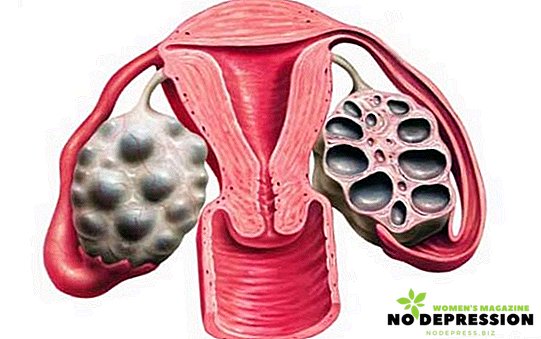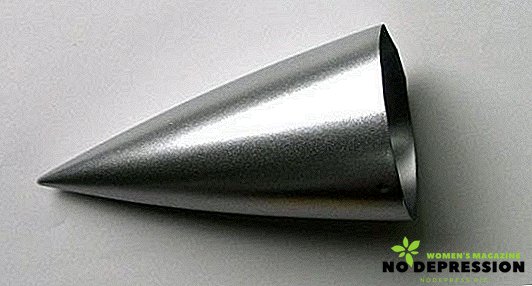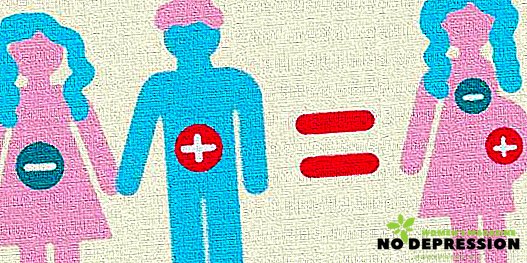That completes the nine months of waiting. Closer and closer meeting with the long-awaited crumbs. The expectant mother already has amazing changes that complete the pregnancy and prepare the body for the birth process. How and when will this happen? How not to miss that already "time"?

Contractions: what it is and why they are needed
Medically speaking, contractions are involuntary and regular contractions of the muscular muscles of the uterus that cannot be controlled by the woman in labor.
It is the contractions that begin the mysterious process that every expectant mother is waiting and afraid of.
 Contractions are the coordinated work of the uterus and the woman’s entire body, aimed at opening the birth canal, advancing and expelling the fetus, separating and isolating the placenta. With the help of contractions, the uterine throat gradually opens up to the size of the largest part of the fetus (head) and the fetus moves through the birth canal through the pelvic bone ring.
Contractions are the coordinated work of the uterus and the woman’s entire body, aimed at opening the birth canal, advancing and expelling the fetus, separating and isolating the placenta. With the help of contractions, the uterine throat gradually opens up to the size of the largest part of the fetus (head) and the fetus moves through the birth canal through the pelvic bone ring.
When the presenting part (head or pelvic end) sinks to the pelvic floor, the contractions become attempts. With the help of contractions of the abdominal muscles (attempts), the process of birth of the fetus is completed. Ending childbirth ends with separation and afterbirth.
What are the sensations and the first signs of labor in primiparous?
It is proved that the threshold of pain sensitivity is different in all pregnant women, and they all react differently to pain during labor.
Cramping pains never occur suddenly. Even if the sensation of contractions is not familiar to the first-born woman, she will always feel that something is happening to the uterus: then she becomes hard, “stone”, then suddenly “relaxes”.
As we approach delivery, the pregnant uterus begins to contract more and more often. Finally, the intensity of contractions increases so much that at the time of labor the woman begins to feel discomfort in the lower abdomen and lower back.
How to understand that contractions began at the first and second birth?
At the very beginning of labor, the primipara woman, through inexperience, may not recognize that the contractions began. But after 2 - 3 hours, she clearly understands that these are true contractions and how they differ from training pains. Every hour their frequency, strength and duration change. They are getting stronger, harder and longer.
Secondary women do not confuse the beginning of labor with nothing.
In reality, it also happens that contractions in the second and subsequent births can proceed without any serious consequences. Then the woman can be admitted to the obstetric hospital with almost a fully open cervix.
Training (false) contractions
In primiparous women, for 2 weeks, and for multiparous women, irregular weak contractions of the uterus may appear several days before the expected birth, which are very short, lasting a few seconds, and occur several times during the day, but more often at night. As a rule, they begin and end by themselves.
At this time, new sensations appear in the form of uterine tension, periodically arising incomprehensible aching pains in the lower abdomen.
These colic pains are called in different ways: preparatory, training, false or Braxton-Gix contractions. These fights are very important and necessary. They prepare the birth canal of a woman for childbirth.
But why false contractions? Because they do not cause softening, do not affect the processes of smoothing and dilatation of the cervix and also are not a sign of labor.
 Preparatory fights can be attributed to the precursors of childbirth. They occur due to hormonal changes in the body of a pregnant woman. This is a variant of the norm. And does not require treatment to the doctor.
Preparatory fights can be attributed to the precursors of childbirth. They occur due to hormonal changes in the body of a pregnant woman. This is a variant of the norm. And does not require treatment to the doctor.
Theoretically, during the two weeks of the preparatory period, a pregnant woman can observe various changes in her state of health. But contrary to popular belief, they do not give an absolute guarantee that birth will occur in the near future.
Consequently, if labor activity does not develop in an hour, day, or even a week after the precursor contractions that were first noted, this is not considered a pathology.
This does not mean that they have no preparation for childbirth. Just these processes occur unnoticed by the pregnant woman. And this is also the norm.
The real fights: how to understand that they started?
According to scientific concepts, contractions are rhythmic, regular, at certain time intervals, arising pains that concentrate above the pubis, give to the perineum, the bladder.
Very often, a woman at a doctor’s consultation at a women's clinic says: “I have something sore, stab, ache, but I cannot understand whether it’s a contraction or not.” To this we can definitely answer: "When in doubt, these are not real fights, but training ones."

One can speak about true contractions when pains appear in 10–15 minutes, their frequency, duration and intensity gradually increase.
A woman feels a true labor pain as pain extending from the bottom of the uterus to the lower abdomen and lower back. The contractility of the uterus increases with the active and not passive behavior of a woman.
Comparative characteristics of true and false contractions:
| The true | False | |
|---|---|---|
| Frequency | Regular intervals, the intensity increases | Irregular intervals, the intensity does not change |
| The discomfort | In the lower back and lower abdomen | Lower abdomen |
| Cervical dilatation | Progressing | The cervix remains unchanged |
| Influence of drugs | Do not affect the strength of contractions | Contractions subside and cease |
What should be the interval beginning fights?
In the initial stage of labor, contractions begin with an interval of 10–15 minutes, afterwards their frequency and intensity increases noticeably, the pauses between them gradually decrease to 1–2 minutes. At the very beginning of the generic process, the fight lasts 10 to 15 seconds, at the end of the labor 50 - 60 seconds.
During contractions, the active behavior of the woman is recommended, as this activates the generic process.
What to do if contractions begin
- first, do not worry and do not panic;
- secondly, make sure the contractions are true;
- thirdly, calculate the frequency and duration of contractions.

Experts recommend going to the maternity hospital as soon as the contractions are repeated every 5 to 7 minutes, and their duration will be 20 to 25 seconds. At the same time, it is important to take into account the distance from the maternity hospital.
Postpone a trip to the hospital is not worth it, especially if the amniotic fluid is poured out simultaneously with contractions. Because a woman will not be able to independently assess the obstetric situation and all the health risks.
Therefore, having collected everything you need and, having called an ambulance, you should immediately go to the maternity hospital accompanied by your beloved husband.
Is pain terrible, how to ease labor contractions?
The pain of contractions depends not only on their strength, but also on the preparation of the pregnant woman for childbirth and her spiritual comfort.
All women during pregnancy must pass training courses for childbirth "School of the future mother." They are carried out in any antenatal clinic or in centers for preparation for childbirth.
What can help reduce pain during labor?
- The active position of women in labor (you can stand, move, squat). The mother intuitively searches for those positions that facilitate her contractions and allow the baby to feel comfortable.
- It is not recommended to lie. In the horizontal position, the direction of the birth canal changes and the child has to move upwards, which slows down the process of labor and makes them painful and painful.
- Proper breathing: inhale through the nose, exhale - through the mouth with a noisy sound, as if blowing out a candle. It is very important that the diaphragm is activated. The exhalation should be twice as long as the inhalation.
- Use gymnastic ball. During the fights on it, you can sit and sway. Or you can take the knee - elbow position, leaning his hands on the ball.
- Massage the sacro-lumbar region. His woman can do it yourself, and you can attract a husband or ask a midwife.
- Calm music has a nice relaxing effect.
- Stroking the abdomen (clockwise) will also bring relief during the bout.
 Drug anesthesia, if there are no specific indications for this, it is better not to use it in order not to harm the fetus.
Drug anesthesia, if there are no specific indications for this, it is better not to use it in order not to harm the fetus.
The use of antispasmodics is acceptable. These drugs help the cervix to open up better in the process of labor and make labor less painful.
The most modern method of anesthesia during labor today is spinal or epidural anesthesia.
This method has both indications and contraindications. Therefore, the question of the feasibility of using this type of anesthesia should be resolved only by an obstetrician in conjunction with an anesthesiologist.
If contractions do not occur - how to be?
The term for childbirth appointed by the doctor has long passed, and the baby is in no hurry to be born. So you need to think about post-pregnancy.
A postponed pregnancy is one that lasts more than 42 weeks, and childbirth is called late.
In this situation, hospitalization is shown in the hospital, where examinations will be conducted to assess the condition of the fetus (ultrasound, Doppler, CTG), after which the method and date of delivery will be selected.
Easy childbirth without pain and fear! Mom to be great!
And some more information about the bouts is in the next video.













